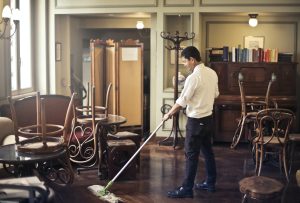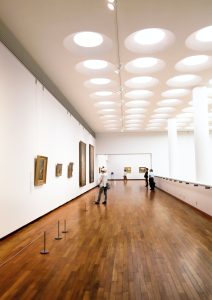When it comes to making a lasting impression in the business world, appearances matter. The flooring of your commercial space plays a crucial role in creating that impactful first impression on your clients and employees. If you’re in the Denver area and looking to elevate your business space, consider the exceptional commercial hardwood flooring services MacDonald Hardwoods has to offer. In this blog post, we will explore the benefits of choosing commercial hardwood flooring and why you should trust Macwoods for all your commercial flooring needs.
The Appeal of Commercial Hardwood Flooring
Commercial hardwood flooring is a timeless and elegant choice for any business environment. Its beauty and durability make it a favorite among business owners and interior designers alike. Here are some key reasons why commercial hardwood flooring is a smart choice for your Denver-based business:
a. Aesthetic Versatility:
One of the most significant advantages of commercial hardwood flooring is its aesthetic versatility. It can effortlessly adapt to a wide range of interior design styles, from classic to contemporary. Whether you’re aiming for a professional and polished look or a warm and inviting atmosphere, hardwood flooring can complement your vision perfectly.
b. Durability:
Denver’s bustling commercial spaces require flooring that can withstand heavy foot traffic, spills, and daily wear and tear. Commercial hardwood flooring is renowned for its durability and longevity. With proper maintenance, it can last for decades, making it a cost-effective choice in the long run.
c. Easy Maintenance:

Keeping your commercial space clean and presentable is a top priority. Hardwood flooring makes this task easier due to its smooth and sealed surface, which is resistant to dirt and stains. Regular sweeping and occasional mopping are usually all that’s required to maintain its pristine appearance.
d. Eco-Friendly:
Sustainability is a growing concern for businesses today. Commercial hardwood flooring is an eco-friendly option, as it is sourced from renewable and responsibly managed forests. Additionally, the longevity of hardwood flooring reduces the need for frequent replacements, further reducing environmental impact.
Commercial Flooring Services in Denver
Now that you understand the advantages of commercial hardwood flooring, let’s dive into the specialized services available at Macwoods to cater to your commercial flooring needs:
a. Installation:
Proper installation is crucial to ensure the longevity and performance of your commercial hardwood flooring. Our team of flooring professionals understand the unique challenges of commercial spaces and can provide expert installation services tailored to your specific needs.
b. Customization:

Every business is unique, and your flooring should reflect your brand identity. Macwoods’ Commercial flooring services in Denver offer customization options, allowing you to choose from various wood species, stains, finishes, and patterns. This customization ensures that your flooring aligns perfectly with your business’s aesthetics and requirements.
Why Choose Macwoods for Commercial Flooring Services in Denver
When it comes to commercial flooring services in Denver, MacDonald Hardwoods stands out as a trusted and experienced provider. Here’s why you should consider Macwoods for all your commercial hardwood flooring needs:
a. Expertise and Experience:
Macwoods boasts a team of seasoned professionals with years of experience in the commercial flooring industry. We understand the unique requirements of commercial spaces and have the expertise to handle any project, regardless of size or complexity.
b. Comprehensive Services:

From initial consultation to installation, Macwoods offers a comprehensive range of services to meet all your commercial flooring needs. We are committed to delivering a seamless and hassle-free experience for our clients.
c. Quality Assurance:
Our team is dedicated to delivering top-notch quality in every project we undertake. We use premium materials and the latest technology to ensure that your commercial hardwood flooring is not only beautiful but also built to last.
d. Client-Centric Approach:
Client satisfaction is at the core of Macwoods’ business philosophy. We work closely with you to understand your vision and objectives, providing personalized solutions that align with your business goals.
e. Competitive Pricing:
Macwoods offers competitive pricing without compromising on the quality of their work. We understand the budget constraints of businesses and strive to provide cost-effective solutions that meet your financial requirements.
Conclusion
In the competitive business landscape of Denver, creating a memorable and inviting commercial space is essential. Commercial hardwood flooring services in Denver offer an ideal solution to enhance your business’s appearance, durability, and eco-friendliness. With Macwoods, you can trust in their expertise, commitment to quality, and client-centric approach to deliver outstanding results.
Elevate your business space today with commercial hardwood flooring services in Denver, and experience the transformative impact of a beautiful and functional floor. Contact MacDonald Hardwoods for a consultation and take the first step towards making your commercial space stand out in the Mile High City.